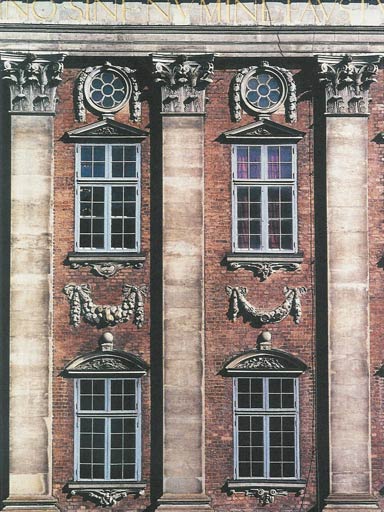CODART ACHT Study trip: program
Complete program of study trip to Stockholm, Drottningholm, Skokloster, Uppsala, Västerås and Strängnäs (21-26 September 2005)
On 17 May the official opening of registration will begin. At that time the price will be announced. All registrations received before 31 May will be treated on an equal basis. If the group number is less than 30 at that date subsequent applications will be treated on a first come first serve basis. Priority will be given to (1) full members of CODART, (2) associate members and (3) up to 5 non-members introduced by a full member. If more than 30 members apply, priority will be given to attendees of CODART congresses.
Provisional program as of 4 April 2005
When Hans Nieuwdorp held his historic exhibition of 15th- and 16th-century Antwerp composite altarpieces (retabels) in Antwerp Cathedral in 1993, he compiled a checklist of the examples he had located in the course of 25 years of research on the subject. Perhaps not so surprisingly, in view of the extent of iconoclasm in Belgium, the country of origin of the altarpieces came only third among countries preserving these astonishing objects. In first place was Germany, but in second place, and this is something of a surprise, stood Sweden, with 26 examples. Before the (early) adoption of Protestantism, a constant stream of orders went from churches all over Sweden to the Antwerp dealers who coordinated the production of these highly complex creations of carpenters, sculptors, painters and gilders, each organized in a different guild. As purchasers on this scale, Swedish churches can be said to have been a major partner in the Antwerp art world in the decades around 1500. The survival of so many altarpieces in Sweden, as compared to, for example, the Netherlands can be credited to the fact that Lutheranism became the state religion of Sweden in 1527, which it remained until the year 2000. Thanks to the relatively relaxed attitude of the Lutherans to art in churches, the country was spared the devastations of iconoclasm. Magnificent examples in a variety of modes will be seen on the study trip in the cathedrals of Strängnäs, Västerås and Uppsala, and in the Historic Museum in Stockholm.
As in other areas of Northern Europe, many of the architects and sculptors – not to mention engineers and town planners – who gave form to noble, governmental, ecclesiastical, educational and (primarly) military buildings and installations in Sweden in the early modern period came from the Netherlands. An entire colony of Dutch professionals, craftsmen, small businessmen and shopkeepers was brought to Göteborg, where they built two successive cities, the first of which was destroyed by the Danes in 1611. In the course of the 16th and 17th centuries colonies of this kind were established in various Swedish cities. The one in Stockholm was concentrated in Södermalm, the island south of Gamla Stan, the old town. Speaking Dutch and practicing Calvinism, they formed communities of their own. Some survived well into the 18th century, interacting on all levels, including the arts, with local society.
The foremost artist in this wave of imported Netherlanders was the Flemish architect and sculptor Willem Boy (ca. 1520-92), who in 1558 was brought from Mechelen to Sweden by King Gustav Vasa (King Gustav I; 1496-1560; reigned 1523-60). Works by Boy to be seen on the trip include the churches of St. Jacob and St. Klara in Stockholm, the funeral monument of Gustav Vasa in Uppsala Cathedral, and the beautiful, moving tomb of the two-year-old Princess Isabella (1564-66) in Strängnäs Cathedral.
The royal gardens of Sweden were designed and maintained in the 16th century by the Netherlandish garden architect Hans Friese. Kings Gustav Vasa and his sons Erik XIV (1533-77; reigned 1560-68) and Johan III (1537-92; reigned 1568-92) had him in service for some 40 years, during which he laid out the gardens at the palaces of Gripsholm, Svartsjö, Linköping, Uppsala and the Kungsträdgården in Stockholm. This precedent was picked up in the following century when Hedvig Eleonora (1636-1715), the widow of King Karl X Gustav (1622-60; reigned 1654-60), brought the Dutch gardener Christiaan Horleman to Sweden. After his death his function was inherited by his son Johan and grandson Carl, who, after Johan was knighted by King Karl XII, changed the family name to Hårleman. Thanks to the ties of these men with Dutch colleagues and plant nurseries, the actual flora used in Swedish royal gardens overlapped that of the Netherlands for a century and a half.
In the 17th century the main motor for Swedish-Netherlandish artistic relations was provided by the military-industrial complex of the time, epitomized by the Flemish-Dutch merchant Louis De Geer (1587-1652). De Geer was born in the prince-bishopric of Luik (Liège) into a pious Protestant family that moved to Dordrecht, perhaps for religious reasons, in 1596. With his brother-in-law Elias Trip (1570-1636), he built a financial empire in the Netherlands and Sweden, based on mining and weapons manufacture. In exchange for minerals, mines and valuable contracts and licenses, the two helped fund the wars of the Swedish king Gustav II Adolf (1594-1632; reigned 1611-32), in the process acquiring houses and estates in and outside Stockholm. De Geer became Lord of Österby and Finspång, mining districts in Uppland, north of the city. At his houses he installed paintings by Dutch artists, family portraits and views of his Swedish holdings. Paintings of Sweden were hung in his Amsterdam home, the ‘House with the Heads’ at Keizersgracht 123, and in that of the sons of Elias Trip, the Trippenhuis (see CODART ZES). Artists of the caliber of Bartholomeus van der Helst and Allaert van Everdingen were commissioned by the Trips and De Geers, reinforcing the already strong ties in painting between the Netherlands and Sweden. The close resemblance of De Geer’s house in Södermalm, Stockholm, to the Mauritshuis in The Hague, although it may be fortuitous, invites one to speculate on the parallels between the expansive careers of Louis De Geer and Johan Maurits van Nassau. Both were immigrants to the Netherlands who rose to leading positions in their respective worlds, especially outside the country and especially in military contexts.
The import of architectural and artistic talent from the Netherlands became part of the regular trade activities of the De Geers and Trips, especially in the following generations. Conversely, the Swedish government maintained an agent in the Netherlands, Peter Trotzig, who joined cultural entrepreneurship to his more commercial duties. Via these channels, Justus Vingboons (1620/21-98), the younger brother of the famous Dutch architect Philips Vingboons, seems to have gotten Swedish commissions in Amsterdam and Dutch ones in Stockholm. In 1653 Trotzig brought Justus to Stockholm to complete the Riddarhuset (House of the Nobility), begun by Simon de la Vallée. Koen Ottenheym considers the drawings Justus made for the project to be derived from Philips’ rejected proposal for the Amsterdam town hall. Following the completion of his three-year contract in Stockholm, Justus returned to Amsterdam to build the Trippenhuis for the sons of Elias Trip, Louys and Hendrik, who he is likely to have met in Sweden. The Riddarhuset was the most conspicuous project of its time and it served as a model for representative Swedish architecture for a century to come. In other respects as well, Dutch attainments in the arts, sciences and education served as a model for Sweden in the 17th century. A prominent manifestation of this phenomenon was reached under Queen Christina (1626-89; reigned 1632-54), when the Dutch scholars Isaac Vossius and Nicolaas Heinsius served as royal advisors.
A lasting record of the architectural fruits of this long period of Dutch-Swedish cooperation is the album Suecia antiqua et hodierna (Sweden then and now; published in 1715), a proud compilation of 350 engravings of the main country houses, city palaces and towns of the kingdom. Not only were many of the houses in the book built by Netherlandish architects, the book itself was filled largely by Dutch draftsmen and engravers. As in the case of Poland (CODART ZEVEN) and Denmark (undoubtedly a CODART theme to be), the national image of Sweden was given form in the 17th century both on the ground and in iconographic representation by craftsmen, designers and artists from the Netherlands. That many of the same individuals also fulfilled similar functions in the Netherlands itself, in the service of town regents and the House of Orange, is characteristic for a period when the nationalities of Europe were still in statu nascendi.
Swedish military expeditions of the 17th century, when successful, never failed to come home without some looted art. Undoubtedly the highpoint, one of the most successful art raids in history, was the seizure in 1648 in Prague of some 600 items collected by Emperor Rudolf II. The raid was committed just a day or two before the signing in Osnabrück of the peace treaty that would have made the act illegal. Among the booty were major paintings by Netherlandish masters such as Jan van Hemessen and Jan Massys. Bronze sculptures by Adriaen de Vries were taken from the gardens of the Wallenstein Palace and were placed in Drottningholm at the end of the 17th century, where they still stand today.
Although Queen Christina was the most dedicated art collector among the Swedish monarchs, few of her possessions have remained in the country, and few of those were from the Netherlands. Half the collection of 16th-century Netherlandish paintings in the Nationalmuseum, some 30 paintings, came to Christina’s collection from Prague as booty. Included amongst them are all the important paintings by the aforementioned Beuckelaer, Hemessen and Jan Massys. Just two or three of the paintings have an older Swedish provenance, form the collection of Gustav Vasa.
Participants in the CODART ACHT congress will have an opportunity to admire a choice of masterpieces from Christina’s drawing collection in the Teyler Museum. After her abdication and departure for Rome the collection was sold in parcels over the course of the centuries. In the late 18th century Pieter Teyler was able to buy part of the collection from the Odescalchi family.
Several late 17th- and 18th-century monarchs of Sweden collected art for the nation in a less violent fashion. The provenance of some of the best Dutch and Flemish paintings in the Nationalmuseum are found on the inventories of King Fredrik I (1676-1751; reigned 1720-51) in 1749, in 1760 of Queen Lovisa Ulrika (1720-82), in 1771 of her consort Adolf Fredrik (1710-71; reigned 1751-71), in 1792 of King Gustav III (1746-92; reigned 1771-92) and in 1804 and 1816 of the Kungliga Museum (Royal Museum).
Of even greater importance in the 18th century than the rulers was the courtier who advised them in their purchases (or sold to them) and who built outstanding collections of his own, Count Carl Gustaf Tessin (1695-1770). The only son of the palace architect Nicodemus Tessin the Younger, Carl Gustaf was the most brilliant Swedish cultural personality of the 18th century. He began buying art for the crown in Paris in 1728 and again in 1739-42, when he was ambassador there. In 1747 he became prime minister. ‘Ruined, however, by the costs of collecting and of maintaining the luxurious lifestyle of a great nobleman, he was forced to sell off much of his collection and many of his most important works were ceded to the Swedish royal family…. After his death [the rest of his collection] was sold at two auctions…. At the first auction Gustav III bought many of the works and they became public property when the royal museum was created in 1794. This became the Nationalmuseum in 1860.’ (The dictionary of art)
That museum, the country’s main repository of Dutch and Flemish paintings and drawings, is the host museum for the CODART ACHT study trip. The second most important museum collection in Sweden, Göteborgs Konstmuseum, with important paintings by Rubens, Jordaens, Snyders and Terbrugghen among others, cannot be visited on account of the distance. Among the many other attractive destinations that we are obliged to omit for the same reason are the Cathedral of Linköping, with its world-famous triptych of the Crucifixion by Maerten van Heemskerck (a full-size reproduction can be seen in the Grote Sint Laurenskerk in Alkmaar by participants in the CODART ACHT congress excursion to Noord-Holland); and Leufsta Bruk and Finspång, country houses built by the de Geers in the 17th century as headquarters for their mining and manufacturing operations south and north of Stockholm.
Among the sources for the above is a book published in 2002 by the Royal Netherlands Embassy in Stockholm: Badeloch Noldus, Palats och herrgårdar: Nederländsk arkitektur i Sverige | Stadspaleizen en buitenplaatsen: Nederlandse bouwkunst in Zweden. ISBN 91-974145-6-5.
Wednesday, 21 September
Flight to Stockholm by own arrangement (not included)
Check in to hotel:

Östermalms Saluhall

Östermalms Torg
Hotell Riddargatan
Riddargatan 14
SE-11435 Stockholm
T +46 8 5557 3000
F +46 8 5557 3011
E /* */> hotelriddargatan@profilhotels.se
W www.profilhotels.se
This pleasant, recently renovated hotel is at the corner of Nybrogatan, one of the liveliest streets in the city, lined with chique cafés, restaurants, boutiques and specialty shops. Two blocks from the hotel is the world-famous Östermalms Saluhall, one of the most picturesque covered markets in Europe. On the adjoining square, Östermalmstorg, there are outdoor restaurants and wonderful views of the surrounding churches and façades.

Nationalmuseum, Stockholm, seen from the Royal Palace

Clouds over Södermalm, seen from Nybrohamnen

Solfrid Söderlind, director of the Nationalmuseum
16:00 Nationalmuseum
Södra Blasieholmshamnen
Box 16176
SE-10324 Stockholm
T +46 8 5195 4300
E info@nationalmuseum.se
W http://www.nationalmuseum.se/
Opening by King Carl XVI Gustaf of the exhibition The Dutch Golden Age, followed by a reception and dinner, hosted by Solfrid Söderlind, director of the Nationalmuseum.
Thursday, 22 September
Nationalmuseum
09:00-11:00 Visit to the exhibition with an introduction by Görel Cavalli-Björkman, before the public is admitted to the museum. The Dutch Golden Age was organized to mark the publication of Görel Cavalli-Björkman’s catalogue of the 500-odd Dutch paintings in the museum. The Stockholm holdings are augmented by loans from the Statens Museum in Copenhagen and elsewhere, including the Rijksmuseum. In preparation for the trip, by all means consult Nationalmuseum Stockholm: illustrerad katalog över äldre utländskt måleri | illustrated catalogue – European paintings, Stockholm, 1990. (ISBN 91-7100-382-7)

Frans Floris, Allegory of Death and Resurrection, Stockholm,
11:00-12:00 Visit to the permanent collection. The major of the Flemish paintings from the permanent collection will be on view in in the Rembrandt gallery during the exhibition; these include works by Joachim Beuckelaer, Jan Brueghel, Lucas van Valckenborch, Joos de Momper, Peter Paul Rubens, Jacob Jordaens, Anthony van Dyck and Frans Snyders. The latest acquisition (2003), an Allegory of Death and Resurrection attributed to Frans Floris, will assuredly be among them. To ensure that you will not miss anything that is of special interest to you, consult the illustrated catalogue of European paintings in advance. Paintings not in the galleries may be seen in the reserves on Monday morning.
12:00-13:00 Rehn Room, discussion of exhibition moderated by Gary Schwartz, with curators:

Görel Cavalli-Björkman, director of research, Nationalmuseum
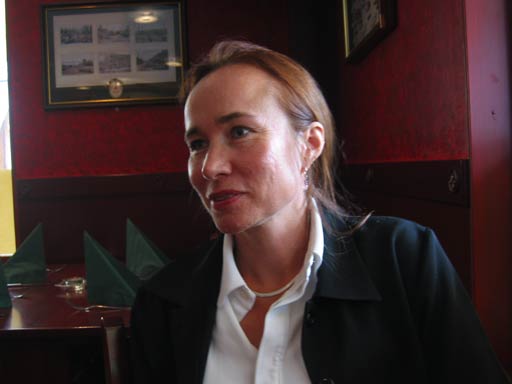
Karin Sidén, curator of paintings and sculpture, Nationalmuseum
Görel Cavalli-Björkman
Director of Research
T +46 8 5195 4300
F +46 8 5196 4456
E gcb@nationalmuseum.se
Karin Sidén
Curator of paintings and sculpture
T +46 8 5195 4304
F +46 8 5195 4456
E ksn@nationalmuseum.se
Mårten Snickare
Curator of prints and drawings
T +46 8 5195 4356
F +46 8 5195 4456
E mse@nationalmuseum.se
13:00-14:00 Rehn Room, lunch.
14:00-14:30 Rehn Room, introduction to architectural tour of Stockholm, Mårten Snickare.
14:30-15:30 Individual visit to museum.
15:30-18:00 Architectural tour of Stockholm with Mårten Snickare. Sites to be visited include:
Jacobs Kyrka (Church of St. James)
Jakobs Torg 5
T+46 8 723 3038
The church was built in 1588-1643 to a design by Willem Boy. The south doorway, the most exuberant of its time, was sculpted in 1644 by Henrik Blume, a member of a German family of sculptors.
Riddarhuset (House of the Nobility)
Riddarhustorget 10
Gamla Stan (Old Town)
T +46 8 723 3990
Considered by many to be the most beautiful building in Stockholm, and, in any case certainly the most prestigious building project of its time. The first plans were drawn up by the French architect Simon de la Vallée, and work was begun in the 1640s under the direction of a German master builder, Heinrich Wilhelm. After Wilhelm’s death in 1652, the assignment passed to the Dutch architect Justus Vingboons. Vingboons shaped the façade with its colossal Corinthian pilasters in sandstone against a red brick wall. The façade’s colossal order and its color scheme were crucial for the development of architecture in Sweden during the second half of the 17th century.
Klara Kyrka (Church of St. Claire)
Klara Östra Kyrkogata
T +46 8 723 3031
Commissioned by Johan III in 1572 and designed by Willem Boy.
Van der Nootska palatset (Palace of Thomas van der Noot)
St. Paulsgatan 21
SE-11846 Stockholm
T +46 8 644 9960
Van der Noot was a highly placed Dutch officer in the Swedish service, whose mother and wife were both Swedish. The façade, from the 1670s, is still in remarkably original state.

House of Netherlandish business magnate Louis de Geer, now the embassy of the Netherlands in Sweden.
The final stop of the tour will be:
18:00-22:00 Royal Netherlands Embassy (House of Louis De Geer)
Götgatan 16A
P.O. Box 15048
SE-10465 Stockholm
T +46 8 5569 3300
F +46 8 5569 3311
E nlgovsto@swipnet.se
Built in 1646-51 for Louis De Geer. The colossal order of the façade has Dutch forerunners such as the Mauritshuis, but it is the first of its kind in Stockholm. The architect was probably the Swedish master bricklayer and contractor Jürgen Gesewitz, working from materials brought back from the Netherlands by the patron. The visit to the embassy will be followed by a reception and dinner, hosted by Ambassador Toine van Dongen.
Friday, 23 September
08:30 Bus departs from hotel.
09:30 Drottningholms Slott (Drottningholm Palace)
SE-178 02 Drottningholm
T +46 8 402 6280
F +46 8 402 6281
W http://www.royalcourt.se/4.53abbbfd7ffdfa677fff26331.html

Eva-Lena Karlsson, curator of Royal Castle Collections
Greeting by
Magnus Olausson
Director
Royal Castle Collections and National Portrait Gallery
Box 16176
SE-10324 Stockholm
T +46 8 5195 4300
F +46 8 5195 4456
E mon@nationalmuseum.se
and
Eva-Lena Karlsson
Curator
E elk@nationalmuseum.se
Drottningholm was purchased by Queen Hedvig Eleonora in 1661 and was destroyed by fire the same year. Nicodemus Tessin the Elder began the reconstruction, which was completed by Nicodemus Tessin the Younger, who also designed the French-inspired Baroque garden, where the sculptures by Adriaen de Vries, now moved to an indoor gallery and replaced by copies, were installed. The architecture has a strong admixture of Dutch classicism, applied with irresistible graciousness. In 1744 the palace was given to Princess Lovisa Ulrika of Prussia by King Fredrik I upon her marriage to the Swedish heir apparent Adolf Fredrik. In 1777, having had the famous Slottsteater built in 1766, she sold it to the Swedish state. In the 1980s the palace was converted for use as the permanent residence of King Carl XVI Gustaf (1946- ), who has been the reigning monarch since 1973. A constitutional reform in 1974 drastically reduced the role of the monarch in Sweden.
09:45-11:00 Visit to the castle, guided by Mårten Snickare.
11:00-11:30 Coffee in the castle café.
11:30-12:30 Visit to garden, with copies after sculptures by Adriaen de Vries, and to the one-room Adriaen de Vries Museum, with the originals, guided by Görel Cavalli- Björkman.
13:00-14:30 Lunch at
Drottningholms Wärdshus
Malmbacken
SE-178 02 Drottningholm
T 08-759 03 08
F 08-759 08 48
E info@drottningholmswardshus.se
W http://www.drottningholmswardshus.se/Engsidor/eng.html
14:30 Bus departs for Stockholm.

The main painting gallery in the Hallwyl Museum, Stockholm
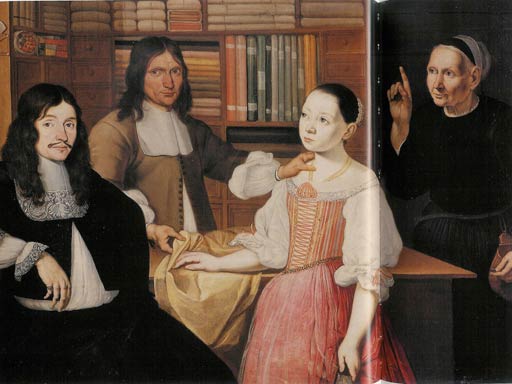
Adriaen Bloem, In the draper’s shop, 1660, Hallwyl Museum

The armory in the Hallwyl Museum, Stockholm
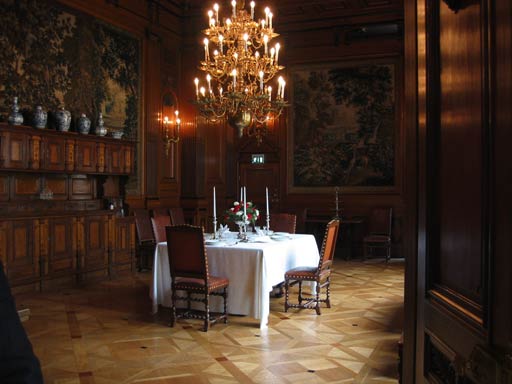
The dining room in the Hallwyl Museum, Stockholm

The kitchen in the Hallwyl Museum, Stockholm

Ingalill Jansson, chief curator of Hallwyl Museum, Stockholm
15:00-17:00 Hallwylska Museet (Hallwyl Museum)
Hamngatan 4
SE-11147 Stockholm
T +46 8 5195 5599
F +46 8 5195 5585
E /* */> hallwyl@lsh.se
Visit to collections with>
Ingalill Jansson
Senior curator
T +46 8 5195 5592
E ingalill.jansson@lsh.se
and
Heli Haapasalo
Curator
T +46 8 5195 5598
E /* */>heli. haapasalo@lsh.se
The Hallwyl Museum was created between 1883 and 1924 by the Stockholm heiress Wilhelmina von Hallwyl and her husband Walther. Built in 1893-98, the building was the private residence of the von Hallwyls and the seat of Walther’s business, as well as the home of Wilhelmina’s ever-growing collection of decorative and fine arts. In 1920 it was donated to the Swedish state. The enterprise has been compared to the contemporaneous city art palaces of Isabella Stewart Gardner in Boston, Sir Richard Wallace in London and Édouard André and Nélie Jacquemart in Paris. Of the foreign painting collection, the catalogue says, ‘The Dutch and Flemish paintings are the absolute core of the collection, in terms of quantity and quality. There are about 160 of them…,’ including portraits by Paulus Moreelse and Johannes Verspronck, landscapes by Pieter Molyn, Jan van Goyen and Aert van der Neer, history paintings by Bartholomeus Breenbergh and Salomon Koninck, church exteriors by Gillis Rombouts and Roelof de Vries, and an extraordinary genre-portrait by the immigrant Dutchman Adriaen Bloem, the only known work of the master, who worked at the court of Leopold I in Vienna from 1668 to 1694. The catalogues of the collection are scholarly and beautifully produced and are available at very reasonable prices. The catalogue of the 412 paintings, Hallwylska målerisamlingen | The Hallwyl collection of paintings, Stockholm (Hallwylska Museet) 1997, fully illustrated almost entirely in color, is now on sale for a mere 150 Swedish kronor. ISBN 91-630-4921-X. Advance purchase directly from the museum is highly recommended to participants in the study trip.
17:00 City bus or metro to art collections of Stockholm University at:

Spökslottet, Stockholm

A corner in Spökslottet, Stockholm

View in the galleries of Spökslottet, Stockholm

Nina Weibull, curator, with Görel Cavalli-Björkman, in Spökslottet
17:15-19:00 Spökslottet (The Haunted Mansion)
Stockholms Universitet
Drottninggatan 116
SE-113 60 Stockholm
T +46 8 164 700
F +46 8 161 959
E http://www.konferensservice.su.se/english/spokslottet
The distinguished Stockholm University painting collection is founded on a gift of 210 paintings donated to the university in 1884 by the widow of Captain Johan Adolf Berg (1827-84), a civil engineer and businessman. Berg built the collection from the 1850s onwards, with advice in the later years from the leading experts of the time, in particular Olof Granberg. Berg’s bequest was part of a campaign on his part to influence Stockholm University to take the arts and humanities more seriously. In 1883 he provided funding for a chair in art history. The collection is housed in a sprawling villa across the street from the main university building. It was erected in the 1690s for the merchant Hans Petter Scheffler and has been called the Haunted Mansion since the early 19th century, for reasons that we trust do not concern our visit.
In somewhat lesser measure than in the Hallwyl collection of the following decades, the largest single foreign school represented in the Berg collection is the Dutch and Flemish. The same applies to acquisitions made for the university collection since the Berg donation. The most rare and astonishing painting in the Spökslottet is The attack by Pieter Bruegel the Elder, whose provenance in itself merits a book: bought by Rudolf II probably shortly after the death of the artist, it was part of the booty taken by the Swedes from Prague in 1648, on behalf of Queen Christina. She took the painting with her when she left Sweden, but had it sold in Antwerp. In the mid-19th century it returned to Swedish hands, becoming successively the property of the Swedish ambassador in Paris, the artist Johan Fredrik Höckert and then Captain Berg.
In alphabetical order, other 16th-century masters represented are Jan de Beer, Joos, Hendrik and Maerten van Cleve and Gillis van Coninxloo; history pieces by Denys Calvaert, Louis de Caullery; landscapes, still life and genre pieces: Cornelis Pietersz. Bega, Wilhelm van Bemmel, Nicolaes Berchem and Jan van der Heyden, Abraham van Beyeren, Andries and Jan Both, Joos van Craesbeek. See Sten Karling, The Stockholm University collection of paintings, Stockholm (University of Stockhom) 1978. ISBN 91-22-00250-2. Illustrated are two of the irresistible conversation pieces that are bound to make the inspection of the collection with curator Nina Weibull an incomparable pleasure.
E nina.weibull@eko.su.se
19:00-21:00 (Under consideration) Dinner in the dining hall of Spökslottet.
Saturday, 24 September
08:30 Bus leaves for Skokloster.

The courtyard of Skokloster Castle

Impression of the main floor interior of Skokloster Castle

Fabrics and painted panelling in Skokloster

A fireplace, stove and corner in Skokloster

A patch of painted gilt leather unexposed to daylight

Carin Bergström, director of Skokloster Castle Museum

Bengt Kylsberg, curator of Skokloster Castle Museum

Painting reserves, Skokloster

Part of the set of tools brought to Skokloster from the Netherlands in the 1670s

Ceiling and wall in the armory, Skokloster
09:30-12:00 Skoklosters slott (Skokloster Castle)
SE-74696 Skokloster
T +46 18 386 077
F +46 18 386 446
E skokloster@lsh.se
W www.skoklostersslott.se
Visit to castle, with
Carin Bergström, director
T +46 18 340 829
E carin.bergstrom@lsh.se
and
Bengt Kylsberg, curator
T +46 18 340 826
E /* */>bengt. kylsberg@lsh.se
In 1611, the young Baltic cavalry officer Herman Wrangel acquired Sko estate as a reward from King Karl XI for his contribution as an officer in the Swedish army. Two years later, he married a woman from an ancient Swedish noble family, Margareta Grip. Their first son, Carl Gustaf, was born at Skokloster in 1613. Carl Gustaf registered at the University of Leiden in 1630, but later pursued a military career, becoming the most renowned Swedish officer of the century. He spoke several languages and had a large number of informants and advisers in Europe, who also supplied him with the latest luxury goods. From 1654 until his death in 1676, Wrangel worked on the construction and furnishing of a new powerhouse at Sko, an unusually grandiose presentation of its owner and his family. In this it was not unique. What makes it different is that it has been preserved to this day. Skokloster and its collections, comprising about 50,000 objects, are an amazing source of knowledge of the Sweden and Europe of the 17th century. The above taken from Bengt Kylsberg, Skokloster: reflections of a great era, Skokloster and Stockholm (Byggförlaget) 1997. ISBN 91-7988-137-8.
While the collection does not contain any major individual works of art from the Netherlands, Wrangel’s ties to the Netherlands led to orders for large numbers of paintings, adornments, furnishings, books, globes and maps from the Low Countries. The mixing of panelling, fireplaces, metalwork, lamps and mirrors, carpets and wall hangings, porcelain and glass, arms and armor as well as paintings and tapestries from many European centers is strikingly illustrative of the schoolblind taste of the time. Everything of quality and flair could find a place in the castle. What makes Skokloster indispensible for a CODART study trip is that it places not only paintings, but also decorative arts of all kinds, as well as weapons and even workman’s tools from the Netherlands in a new context. The Netherlands was the largest single source of Skokloster’s varied collections; many if not most of the items imported from the Netherlands were made there as well. Skokloster provides one of the most complete ensembles of a 17th-century environment in Europe, and it shows how central the Netherlands was in the totality of the taste of the time.
12:30 Boat departs for Uppsala.
S/M Sjösala
Håkan Larsson
Rederi Stenkajen, Brevduvevägen 6, 756 53 Uppsala
T +46 70 564 6407 F +46 18 320 134 E hakan-larsson@telia.com
W http://www.rederistenkajen.se
Lunch on board, during a voyage of an hour and a half said to be exceptionally scenic.

Uppsala Castle, in which the University Art Collections has a number of display

Old chapel wall incorporated into paintings gallery, Uppsala Castle

Johan Cederlund, curator of Uppsala University Art Collections
14:30-15:15 Uppsala University Art Collections in Uppsala Castle, with
Johan Cederlund, curator
Universitetshuset
Box 256
SE-75105 Uppsala
T +46 18 471 1830
F +46 18 109 891
E johan.cederlund@uadm.uu.se
W http://info.uu.se/fakta.nsf/sidor/uppsala.university.id9C.html

Martin Mijtens the Elder, Olof Rudbeck the Elder, 1696,
The entire holdings of the Uppsala University art collection number 4,000 items, of which about 3,400 are on display in various university buildings. We will of course visit the main painting galleries, which are presently housed, by special arrangement with the city, in Uppsala Castle. Although the agreement with the city expires at the end of 2004, the museum has good hope that a renewal will be possible. The Old Master paintings in the collection are hung in two large rooms of the castle, the rest of which is occupied mainly by the Uppsala modern art museum. Pieter Aertsen’s Butcher shop is undoubtedly the most important painting in the collection. Most of the display provides a challenge to attributionists. Illustrated is a portrait of undoubted authorship, both whose painter, Martin Mijtens the Elder (The Hague 1648-1736 Stockholm) and sitter, Olof Rudbeck the Elder (1630-1702; see below), adumbrate important ties between Sweden and the Netherlands. See Uppsala University art collections: painting and sculpture, Uppsala (Uppsala University) 2001. ISBN 91-506-1479-7.

Gustavianum, 1620, Uppsala. Photo: Museum Gustavianum

Entrance to Gustavianum, 1620, Uppsala

Johan Cederlund and Carina Fryklund in anatomy theater of the Gustavianum
15:30-16:15 Visit to Gustavianum, with Augsburg Art Cabinet and anatomical theater.
The Gustavianum was built in 1620 by an architect from the Netherlands, Casper Panten. The anatomical theater, with its high dome, was added in 1663 after a design by the scientist and architect Olof Rudbeck the Elder. It was inspired by the anatomical theater of Amsterdam, which Rudbeck saw on a visit to the Netherlands. It now holds one the most important curiosities to have survived from the 17th century, the Augsburg Art Cabinet. This highly wrought piece of art carpentry, made in the early 1630s for the collector and scholar Philip Hainhofer (1578-1647), was bought from him by the city of Augsburg to give to King Gustav II Adolf in the spring of 1632, after the king had admired it for an hour. In the autumn, following the king’s death, it was shipped to Sweden; in 1694 Karl XI donated it to Uppsala University. Containing over 1,000 objects, mainly in miniature, the Art Cabinet has rightly been called a museum in its own right. No lover of the past can fail to be deeply moved by this time capsule, the most complete object of its kind to have survived to our day. The dedication of the cabinet to Love itself, with Venus crowning the structure, adds to this effect.
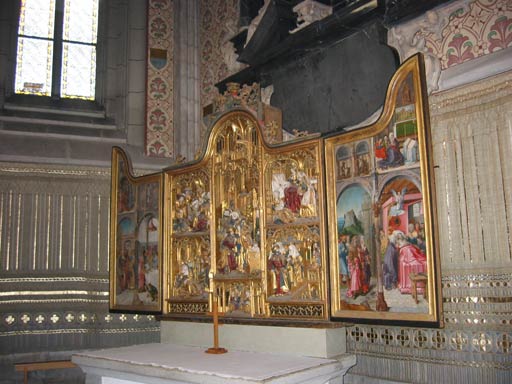
A Flemish altarpiece in Uppsala Cathedral

Tomb of King Gustav Wasa, Uppsala Cathedral
16:15-19:00 Walking tour of Uppsala, with stops at
Uppsala Cathedral, across from the Gustavianum,
Linnéträdgården (Linnaeus’ Garden), a reconstruction of Uppsala University botanical garden the way it looked during the time of Carl Linné (1707-78), laid out by him on the basis of principles derived from the work of the Dutch scientists and horticulturalists he had met in Leiden.
There will be pause for refreshment.
19:00 Bus returns to Stockholm.
Evening free.
Sunday, 25 September
The day for medieval and 16th-century churches and works of art.

Antwerp composite altar, ca. 1520-25, Västerås Cathedral
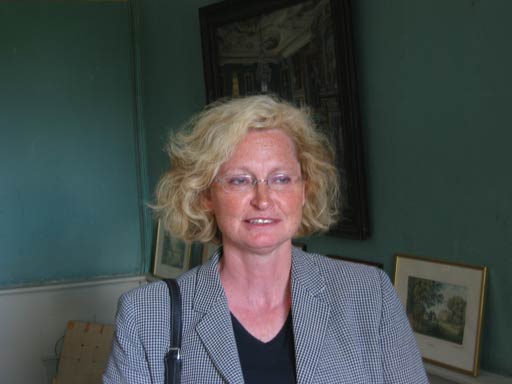
Carina Fryklund, research curator of Flemish paintings, Nationalmuseum
08:00 Bus departs for Västerås, accompanied by
Carina Fryklund, research curator Flemish paintings
Nationalmuseum
E /* */> cfd@nationalmuseum.se
And
Peter van den Brink, curator
Bonnefantenmuseum
Maastricht
T +31 43 329 0190
F +31 43 329 0199
E /* */> vdbrink@bonnefanten.nl
9:30-11:00 Västerås Cathedral.
T +46 21 814 611
11:00-12:00 The hour for church services in both Västerås and Strängnäs will be spent in the bus between the two cities. The order of the visits might have to be reversed, depending on possible baptisms that day. During the journey, Carina Fryklund and Peter van den Brink will fill us in on the background of the two cities and their Netherlandish art works. They take up this task in substitution, honor and commemoration of the beloved colleague who had originally agreed to accompany us on this day, Cecilia Engellau-Gullander, who died unexpectedly in September 2004.
12:00-13:00 Strängnäs Cathedral.
13:00-14:30 Lunch.
14:00-15:30 Bus to Stockholm.

Gothic Hall, with Flemish altarpieces, in Historiska Museet, Stockholm
15:30-17:00 Visit to Historiska Museet (Historical Museum)
Narvavägen 13-17
Stockholm
T +46 8 5195 5600
W http://www.historiska.se/info/english.html

Royal Palace, Stockholm, from the east

Royal Palace, Stockholm, from the north
17:00-18:00 Kungliga Slottet (Royal Palace)
Slottsbacken
Gamla Stan
SE-11130 Stockholm
T +46 8 402 6130
F +46 8 402 6167
E info.stockholms-slott@royalcourt.se
W http://www.royalcourt.se/4.53abbbfd7ffdfa677fff25857.html
Tour of the palace. On the premises is Gustav III’s museum of Antiquities, one of the oldest museums in Europe. It was established in June 1792, in memory of Gustav three months after his assassination.
18:00 Livrustkammaren (Royal Armory)
Slottsbacken 3
S-111 30 Stockholm
T +46 8 5195 5544
F +46 8-5195 5511
E livrustkammaren@lsh.se
W www.lsh.se/livrustkammaren/Thehela.htm
Visit to this award-winning museum situated in an atmospheric cellar vault beneath the Royal Palace. Dinner will be served there.
Monday, 26 September
Rickard Becklén, conservator of paintings, Nationalmusem
Morning
Nationalmuseum
Visit to the painting reserves, with
Görel Cavalli-Björkmann and Karin Sidén
and visit to conservation studio, with
Rickard Becklén, conservator of paintings
T +46 8 5195 4319 E rbn@nationalmuseum.se
or
Konstakademien (Academy of Art)
Fredsgatan 12
Box 16317
SE-10326 Stockholm
T +46 8 232 945
T +46 8 790 5924
W http://www.konstakademien.se/
Here the group will see a small and relatively unknown collection of Dutch and Flemish drawings. An introduction to the academy and collection will be given by
Eva-Lena Bengtsson
Chief curator
T +46 8 232 947
E eva-lena.bengtsson@konstakademien.se
The library is closed on Monday, and we will be received in the reading room, where the Old Master drawings can be viewed. The collection is limited to about 80 sheets by identified Netherlandish, French, German and Swedish masters, and about 50 anonymous ones. Some of the most interesting items were donated to the Academy by Gustaf Ribbing in 1798. A further attraction of the Academy is the monumental painting by Elias Martin (1739-1818) of the visit of King Gustav III to the Academy in 1780. The painting shows Rembrandt’s Claudius Civilis, which belongs to the Academy but has been on loan to the Nationalmuseum since its founding, as it hung in the 18th century.
Midday
Lunch.
Afternoon Transfer to airport.
Afternoon Return flight.
N.B. Please note that the art museums we are going to visit – the Nationalmuseum, the Hallwyl Museum, the university museums of Stockholm and Uppsala – have all published complete catalogues of their painting collections. Please take advantage of this unusual opportunity to prepare your visit by consulting the catalogues and letting the curators know in advance if there are any paintings in which you are particularly interested.
With thanks to Louise Hadorph Holmberg of the Nationalmuseum for her indispensable help .

Louise Hadorph Holmberg, associate of the Nationalmuseum


